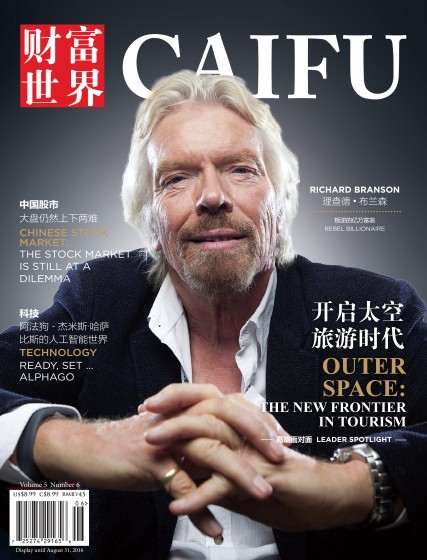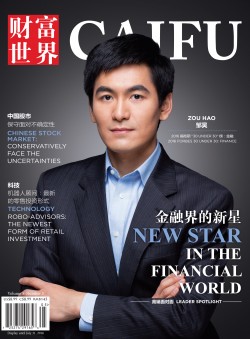CAIFU’s Business Book of the Month: “The Achievement Habit”
- Caifu Magazine | by Caifu Global
- EN
“Aim to see the world in a different way.”
By Catherine Skrzypinski
What items would you like to check off on your bucket list? Are you thinking about embarking on a trip around the world or maybe climbing Mount Everest? Alternatively, are you considering a career shift, like launching your own start-up, or perhaps writing a book? No matter what, you have the ability to fulfill these life experiences and achieve these goals – as author Bernard Roth, Ph.D. has written, you are the only one holding yourself back.
Roth has taught his mantra “Doing Is Everything” to Stanford University students for more than 40 years. He is the Rodney H. Adams professor of engineering, and a co-founder and academic director of Stanford’s Hasso Plattner Institute of Design – also known as the d.school – one of the world’s leading centres of innovation.
He has explained in his 2015 book “The Achievement Habit: Stop Wishing, Start Doing and Take Command of Your Life” why design thinking – a set of general practices that are effective in solving design challenges – can guide people on a path to a more satisfying and productive life.
“The achievement habit does not mean you should aspire to be the King of the Universe,” Roth told CAIFU Monday, April 11, 2016. “It means having a good life, and feeling in command of your life and your circumstances. Most people are creatures of habit, so this is the process of becoming a better person through habitual behaviour.”
Although Roth is a pioneer in the field, he noted his design-thinking focus is on personal transformation and empowerment, such as using design-thinking practices to get rid of problems, or to be open to learn from life experiences, as well as from family, friends and colleagues. Other design-thinking innovators have applied its tenets in organizational innovation and change. He said many educational, industry and government institution executives have approached Stanford’s d.school for insight into this process.
Much like the role of an analyst in the financial services world, design thinking is an approach to solving problems and challenges for both products and experiences, he explained. An engineer by training, Roth said design thinking is not only about how to build a better computer – though that is part of it. It is about breaking down the fight response when experiencing a trying situation – like sitting in traffic or waiting for a late friend or colleague – and then solving the problem.
Design thinking is a five-step process, though Roth admitted it rarely works that smoothly, or follows that specific order. “One of the most important concepts of design thinking is that failure can be a valuable part of the process,” he added.
- Empathy – this is where it starts. Designing is doing the process with other people’s needs and desires in mind. In this step, you are learning what is best for others; not yourself.
- Define the problem. Narrow down the problems you plan on solving. What questions you will answer? Educate people.
- Generate possible solutions by brainstorming, mind mapping or even sketching on napkins. Do this how you work best.
- Develop plans to build your project into physical form. Try out various ideas, or develop plans.
- Test and get feedback.
China Embraces Design Thinking
Western entrepreneurs believe design thinking could make a huge impact in China, the world’s second largest economy. Peter Moore, co-founder and COO of The Leasing Foundation, a London-based non-profit organization that supports the leasing and asset finance industry, went to Beijing in July 2015 to teach design thinking to 100 students at Beijing Normal University’s College of Information Science and Technology.
“Even though there is a growing number of design thinking programs in China, the approach is not as widely understood as in the West,” Moore wrote in a July 2015 LinkedIn Pulse article. “…This version of design thinking taught and used in the West will need to be adapted and redeveloped for the unique setting of Chinese education and business.”
Eric Chan, proclaimed as a leading Chinese designer by the Hong Kong Design Centre, said the index of creativity is different from culture to culture. “Americans place a high value on individuality, whereas the Chinese are quiet, prefer harmony and are conforming and non-confrontational,” he was quoted as saying in Moore’s July 2015 LinkedIn Pulse article.
Roth told CAIFU he has travelled to China several times throughout his career as a guest professor at several universities. “The [design-thinking] concepts are well-received among the Chinese,” he said. “In China, there is a thirst to learn.”
Roth said he has spoken to countless Chinese business professionals in standing room-only meetings. “Chinese society is eager to adopt these concepts.”
Electronics and engineering giant Siemens has adapted design-thinking principles in China with Stanford’s d.school for projects with social and cultural challenges.
According to Bettina Maisch, Ph.D., a design-thinking expert at Siemens Corporate Technology in Beijing, project managers needed to have a deep understanding and respect for Chinese culture to create the special Siemens way of design thinking in China.
“Chinese colleagues are oftentimes very timid, for example during the brainstorming phase,” Maisch told This Is Design Thinking. “It’s extremely important that the supervisor is not in the brainstorming session, otherwise everything will have a totally different dynamic.”
A Must-Read About Achieving Goals
Perhaps the hardest aspect of writing the book, Roth admitted, was starting it. During a sabbatical four years ago, Roth said he stayed close to home on the Stanford campus and focused his attention on writing. “I’ve been teaching the concept for many years, so it has become a part of me.”
Roth said the book’s reception has surprised him most. Since its publication in July 2015, readers have contacted him on email on a daily basis to tell him “The Achievement Habit” has helped them solve problems not only in their professional endeavours, but also in their personal lives. “The book has been embraced by all walks of life,” he added. “…it seems to speak to a lot of people.”
Prominent American entrepreneurs have looked to “The Achievement Habit” for inspiration.
“The Achievement Habit is a masterpiece in describing how to think creatively and fulfill your life’s ambitions,” wrote Paul Hait, an entrepreneur based in Oregon and a 1960 Olympic gold medalist in swimming. “Everyone who reads this book will clearly see why Bernie is considered one of the most creative and liberated thinkers today.”
“Before unleashing design thinking on others, unleash it on yourself,” wrote Tim Brown, CEO of Palo Alto, California-based innovation and design firm IDEO. “You, and the world, will be far better for it.”
“The Achievement Habit” is now available on Amazon in the United States and in Canada for Kindle, in hardcover and audiobook form. The book is also available at Barnes and Noble for Nook, in hardcover and audiobook form. HarperCollins published the North American edition, while the Chinese edition will be published later in 2016.
Follow Bernie Roth on Twitter and “The Achievement Habit” on Facebook.















